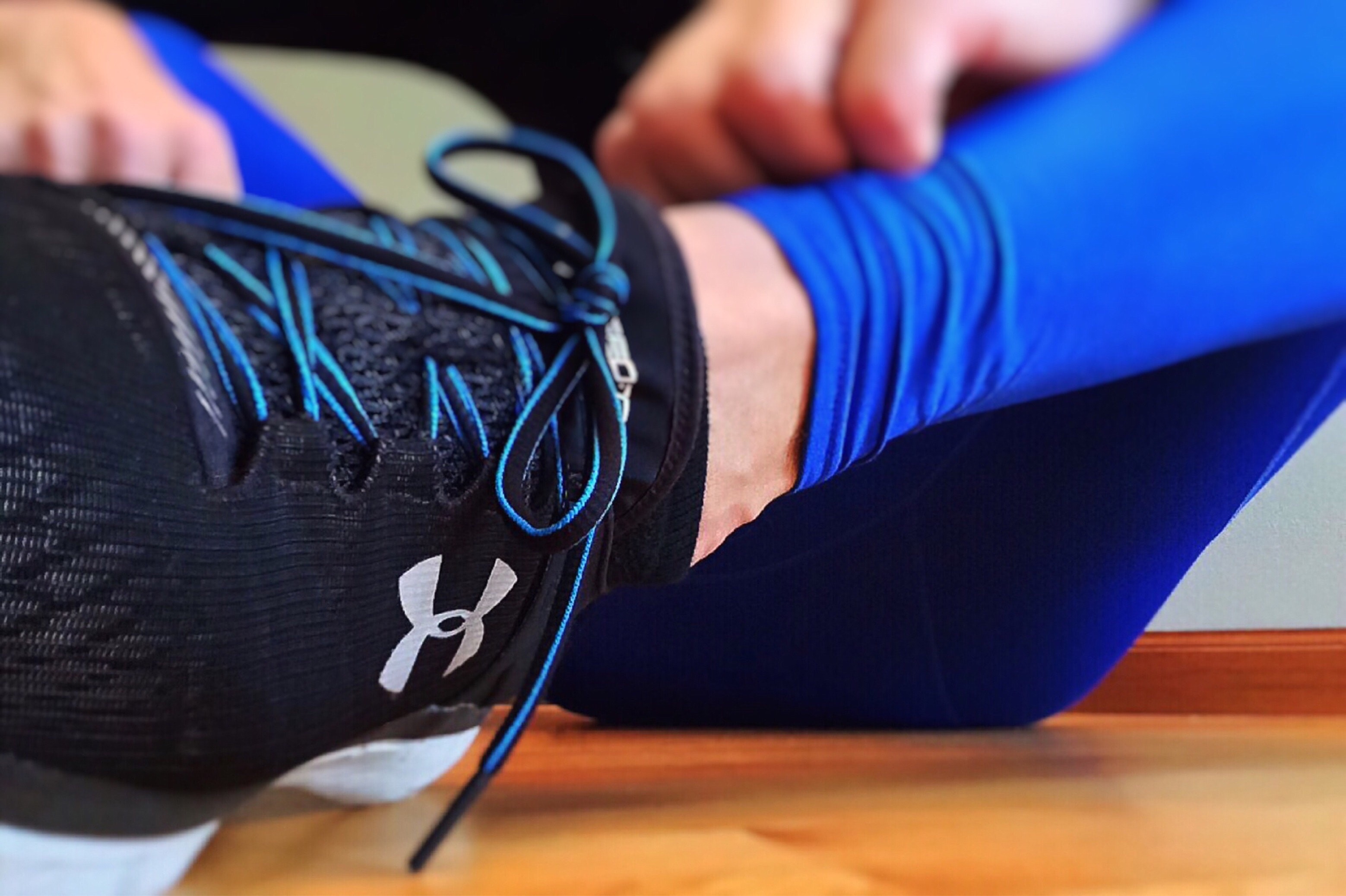Platelet-Rich Plasma Injection for Chronic Achilles Tendinopathy: A Randomized Controlled Trial
Posted on 20th July 2018 by Rowan Kay

This blog is a critical appraisal of the following study: Platelet-rich plasma injection for chronic Achilles tendinopathy: a randomized controlled trial.
Background
Chronic degenerative tendon injuries (tendinopathy) occur frequently among both athletes and the general population and often lead to cessation of sporting activities and interfere with daily life. The treatment for Achilles tendinopathy lacks scientific support and individuals with the condition are at risk of unpredictable clinical outcomes and long-term morbidity. Conservative treatment is not always successful, with 25%-45% of patients requiring surgery. Therefore, there is a need for evidence-based studies on conservative treatments (Alfredson 2003). Platelet-rich plasma (PRP) is used increasingly as a treatment, for releasing growth factors into degenerative tendons. However, good evidence for its use is limited (Foster et al 2009).
What was the study?
The objective of the study was to examine whether a PRP injection would improve outcome in chronic midportion Achilles tendinopathy. The study design was a stratified, block-randomised, double-blind, placebo controlled trial. The trial took place at The Hague Medical Centre, Leidschendam, the Netherlands, with 54 randomised patients aged 18-70 with chronic tendinopathy 2-7 cm above the Achilles tendon insertion. The intervention was eccentric exercises (usual care) with either PRP injection (PRP group) or saline injection (placebo group). Randomisation was stratified by activity. The primary outcome measure was the Victorian Institute of Sports Assessment-Achilles (VISA-A) questionnaire, which was completed at baseline and 6, 12 and 24 weeks. The secondary outcome measures were subjective patient satisfaction, return to sports, and adherence of the eccentric exercises.
What were the results?
The trial found that there was no statistical difference in pain and function between the PRP group and the placebo group. There were also no significant differences observed in the secondary outcome measure (subjective patient satisfaction and return to sports activity).
What were the strengths and weaknesses of the study?
The study set a clear aim and research question, which was addressed. A randomised controlled trial was an appropriate research design for this trial, and is commonly regarded as the gold standard for evaluating the effectiveness of an intervention (Aveyard 2010).
The authors recorded specific inclusion and exclusion criteria, which the participants had to meet to take part in the trial. This enables good judgement regarding the applicability of the trial for the clinical population.
The process for the recruitment of participants with tailored advertisements to medical professionals and the public, adds external validity to the research methods. However, generalisability is an issue with such a small sample size.
The authors justified the number of participants by calculating a sample size, which is an accepted means of estimating the number of participants required to detect a statistically significant difference between groups (Bhalerao and Kadam 2010). Based on previous studies the alternative hypothesis was that the PRP group would be 12 points higher in the VISA-A score in comparison with the placebo group. The standard deviation of the VISA-A score was estimated at 15 points, and by using this it was estimated that a sample size of 27 in each group would be required to detect a difference.
To minimise rater or subject bias, the treating sports medicine physician, researcher and patients were all blinded to what treatment participants received. Block-randomisation was used to assign patients into treatment groups and stratification was used to divide the groups according to ankle activity levels. This meant the groups were blind to treatment, randomly assigned and had a similar distribution of activity levels. These features add validity to the study.
The VISA-A questionnaire is a validated questionnaire designed to evaluate the outcome of Achilles tendinopathy. The disease specific valid and reliable outcome measure adds internal validity to this study.
Another strength is that no participants were lost to follow up and all data was accounted for, so there was no need to perform an intention to treat analysis.
A limitation of the study was that the majority of the participants were active in sports; 22 of 27 in the PRP group and 24 of 27 in the placebo group. Studies have shown that 33% of patients with chronic Achilles tendinopathy are not physically active (Kingma et al 2007). This could influence the applicability of the trial for general practice, as the participants may not be representative of the wider population.
Another limitation of the study was that the number of platelets and amount of activated growth factors present in the PRP injection was unknown. This has implications for research, as not all PRP formulations are the same which makes it hard to compare studies (Andia et al 2014).
A possible weakness of this study was that it was funded by a private medical company (Biomet Biologics LLC), who may have had a financial motive behind the research. However, the article does state that the sponsor had no role in the design and implementation of the study.
Conclusion
This was a clinically robust trial from a peer reviewed journal with findings relevant to practice. The study does not recommend the use of PRP injections as a treatment for chronic mid-portion Achilles tendinopathy. However, this was a small trial in an area that needs more research with greater heterogeneity. A conclusion cannot be based on this study alone and further research is required with larger patient samples to fully investigate a treatment affect.
References
ALFREDSON, H., 2003. Chronic midportion Achilles tendinopathy: an update on research and treatment. Clinics in Sports Medicine. October, vol. 22, no. 4, pp 727-741.
ANDIA, I., LATORRE, P. M., GOMEZ, M. C., BURGOS-ALONSO, N., ABATE, M. and MAFFULLI, N., 2014. Platelet-rich plasma in the conservative treatment of painful tendinopathy: a systematic review and meta-analysis of controlled studies. British Medical Bulletin. May, vol. 110, no. 7, pp. 99-115.
AVEYARD, H., 2010. Doing a Literature Review in Health and Social Care. 2nd ed. London: McGraw-Hill Education.
BHALERAO, S. and KADAM, P., 2010. Sample size calculation. International Journal of Ayurveda Research. vol. 1, no. 1, pp. 55-57. [viewed 7 January 2018]. Available from: https://www.ncbi.nlm.nih.gov/pmc/articles/PMC2876926/
DE VOS, ROBERT. J., WEIR, A., VAN SCHIE, H. T. M., BIERMA-ZEINSTRA, S. M. A., VERHAAR. J. A. N., WEINANS. H and TOL, J. L., 2010. Platelet-Rich Plasma Injection for Chronic Achilles Tendinopathy: A Randomized Controlled Trial. Journal of American Medical Association. January. Vol. 303, no. 2. pp. 144-149.
FOSTER, T. E., PUSKAS, B. L., MANDELBAUM, B. R., GERHARDT, M. B. and RODEO, S. A., 2009. Platelet-Rich Plasma: From Basic Science to Clinical Applications. The American Journal of Sports Medicine. Vol. 37, no.11, pp. 2259-2272.
KINGMA, J. J., KNIKKER, R. DE., WITTINK, H. M. and TAKKEN, T., 2007. Eccentric overload training in patients with chronic Achilles tendinopathy: a systematic review. British Journal of Sports Medicine. [online]. June, vol. 41, no. 6. [viewed 5 January 2018]. Available from: http://bjsm.bmj.com/content/41/6/e3.short




